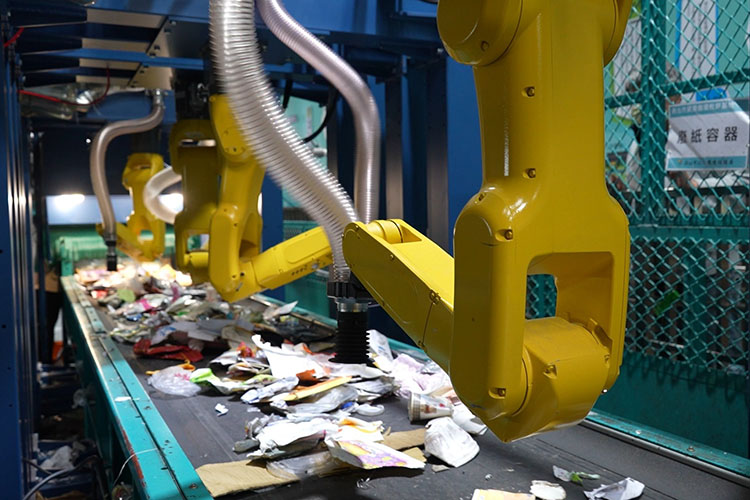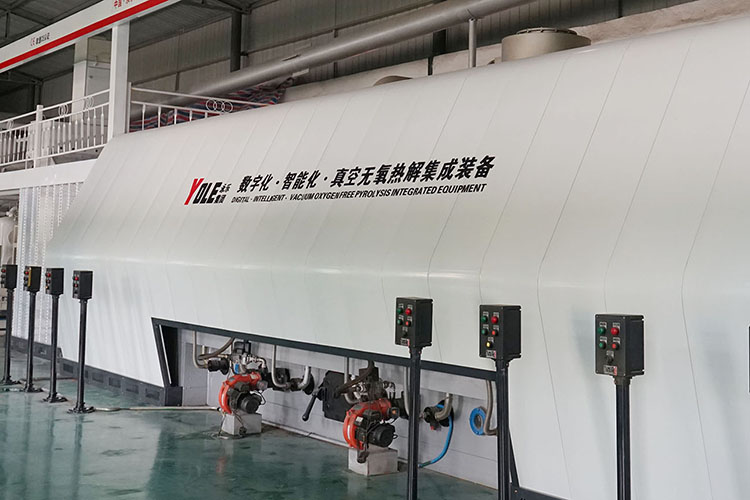Household waste treatment equipment is a system that integrates waste classification, treatment, and resource utilization. Its main purpose is to reduce the pollution of waste to the environment and achieve the reuse of resources. This type of equipment consists of multiple functional modules, each with clear division of labor and complementary functions, working together to complete the entire process from garbage classification to final disposal.

The first step of the domestic waste treatment equipment is the garbage classification module, whose main task is to preliminarily sort and classify the mixed garbage. By using professional equipment such as drum screening machines, magnetic separators, and air separators, garbage is subdivided into categories such as recyclables, organic matter, inorganic matter, and hazardous waste. For example, metallic substances can be separated by magnetic separators, while lightweight materials such as plastics and paper can be sorted by air separation equipment. Classification is the foundation of garbage disposal, which lays a good foundation for subsequent processing and resource utilization.
After classification, large garbage or bulky items need to be further processed through crushing and compression modules. This module is usually equipped with a double shaft crusher and compressor, which can crush furniture, plastic bottles and other bulky garbage into small pieces and compress them to reduce their space occupation. This processing method not only facilitates subsequent transportation and storage, but also provides suitable raw materials for other processing steps.
The organic waste treatment module in the equipment plays a crucial role in dealing with organic matter in the garbage. This module typically uses composting devices and anaerobic fermentation systems to convert kitchen waste and other organic waste into compost or biogas. For example, kitchen waste such as fruit peels and vegetable leaves can be anaerobically fermented to generate biogas for power generation or heating, and the resulting compost can also be used for agricultural production. This approach achieves the circular utilization of resources and minimizes the impact on the environment to the greatest extent possible.

A portion of household waste that is not recyclable or difficult to recycle needs to be incinerated to achieve harmlessness and reduction. At this point, the incineration and power generation modules came into play. Incinerators burn garbage at high temperatures and recover the heat generated during the incineration process for power generation or heating. This module is usually equipped with a high-temperature boiler and a waste heat recovery device, which generates economic value while reducing the volume of waste.
During the incineration process, smoke and pollutants are inevitably generated, making smoke treatment and pollution control systems a key component of waste disposal equipment. In order to purify flue gas, equipment such as bag filters, desulfurization towers, and SCR denitrification devices are usually equipped. These devices can effectively remove dust, sulfur dioxide, and nitrogen oxides from flue gas, ensuring emissions meet environmental standards.
In addition, landfill and leachate treatment modules are also important components of household waste treatment equipment. For those garbage residues that cannot be incinerated or recycled, landfilling is the ultimate disposal method. In order to prevent the pollution of groundwater resources by leachate generated from landfills, membrane filtration equipment will be equipped in the equipment to purify the leachate. This system design not only ensures the harmless treatment of garbage, but also protects the surrounding natural environment.

The resource recycling module is another key link in the entire garbage disposal equipment chain. For the classified recyclable materials such as metals, plastics, glass, and paper, this module further processes or transports them to professional recycling institutions for reuse through packaging machines and storage devices. Through this process, the portion of garbage that was originally considered waste is able to re-enter the production and consumption chain, reflecting the concept of circular economy.
From the functions of the above modules, it can be seen that the household waste treatment equipment covers multiple areas of waste treatment. It can handle various types of waste, including recyclables (such as metal, plastic, glass, etc.), kitchen waste (such as food residues and fruit peels), hazardous waste (such as waste batteries and light tubes), and other waste (such as ceramic shards and cigarette butts). Through the efficient collaboration of this series of devices, the goal of classified treatment, resource utilization, and harmless disposal of household waste has been achieved.
Overall, household waste treatment equipment is not only a core tool in modern waste treatment systems, but also an important means of protecting the ecological environment and conserving resources. It minimizes the amount of landfill waste and improves the efficiency of waste disposal through steps such as classification, crushing, incineration, power generation, and resource recycling, providing strong support for building a sustainable society.
Yongle Environmental Protection is mainly engaged in the research and development, production and sales of complete sets of technical equipment for organic solid waste disposal and comprehensive utilization. Production and manufacturing, domestic waste treatment equipment, tire pyrolysis equipment, medical waste disposal equipment, hazardous waste disposal equipment, and achieve efficient and comprehensive utilization of resources through independently developed low-temperature anaerobic pyrolysis equipment technology solutions.
Tags:Composition and scope of household waste treatment equipment,household waste treatment equipment,YONGLE GROUP
 Latest news
Latest news


























